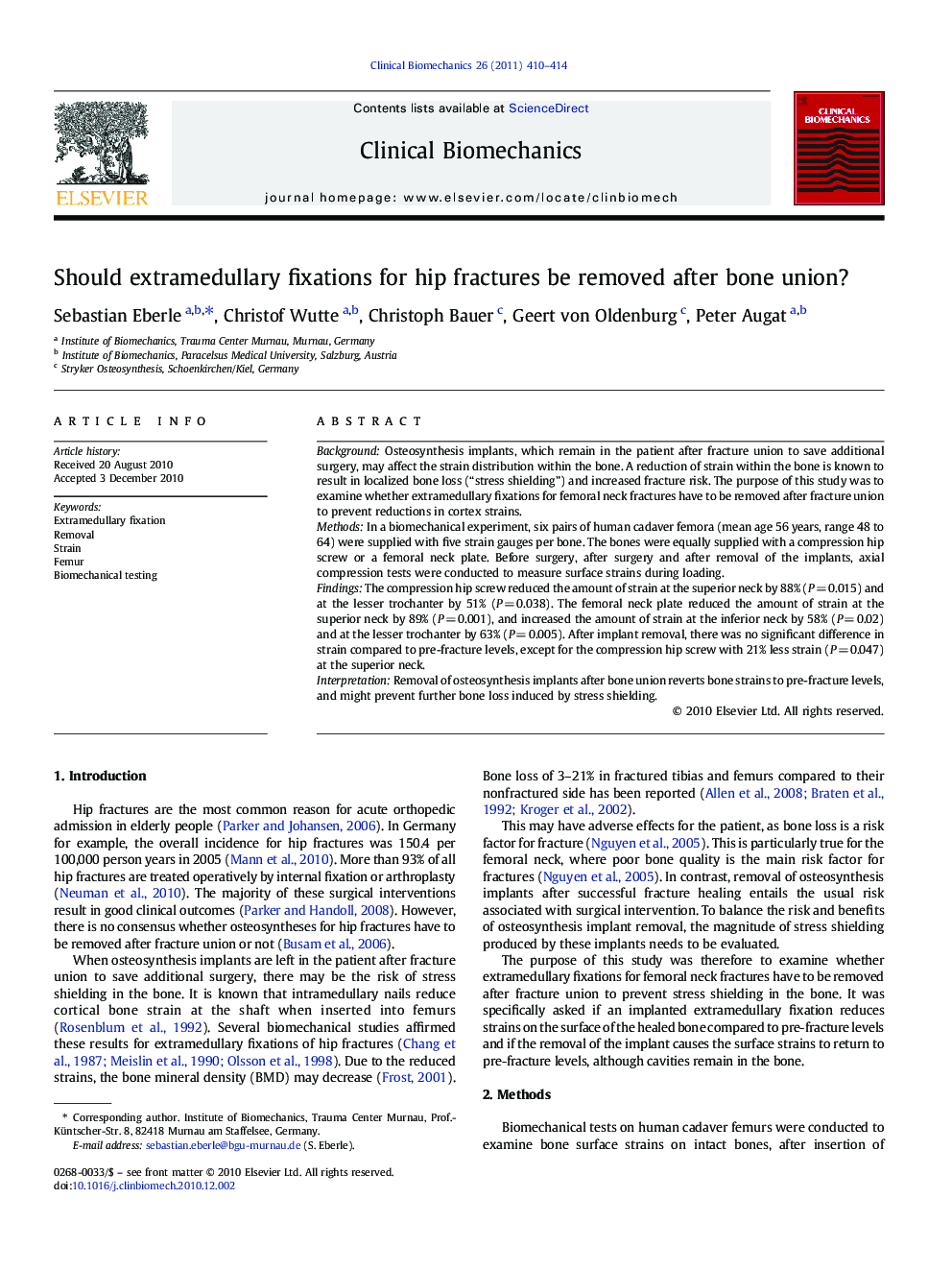| Article ID | Journal | Published Year | Pages | File Type |
|---|---|---|---|---|
| 4050829 | Clinical Biomechanics | 2011 | 5 Pages |
BackgroundOsteosynthesis implants, which remain in the patient after fracture union to save additional surgery, may affect the strain distribution within the bone. A reduction of strain within the bone is known to result in localized bone loss (“stress shielding”) and increased fracture risk. The purpose of this study was to examine whether extramedullary fixations for femoral neck fractures have to be removed after fracture union to prevent reductions in cortex strains.MethodsIn a biomechanical experiment, six pairs of human cadaver femora (mean age 56 years, range 48 to 64) were supplied with five strain gauges per bone. The bones were equally supplied with a compression hip screw or a femoral neck plate. Before surgery, after surgery and after removal of the implants, axial compression tests were conducted to measure surface strains during loading.FindingsThe compression hip screw reduced the amount of strain at the superior neck by 88% (P = 0.015) and at the lesser trochanter by 51% (P = 0.038). The femoral neck plate reduced the amount of strain at the superior neck by 89% (P = 0.001), and increased the amount of strain at the inferior neck by 58% (P = 0.02) and at the lesser trochanter by 63% (P = 0.005). After implant removal, there was no significant difference in strain compared to pre-fracture levels, except for the compression hip screw with 21% less strain (P = 0.047) at the superior neck.InterpretationRemoval of osteosynthesis implants after bone union reverts bone strains to pre-fracture levels, and might prevent further bone loss induced by stress shielding.
